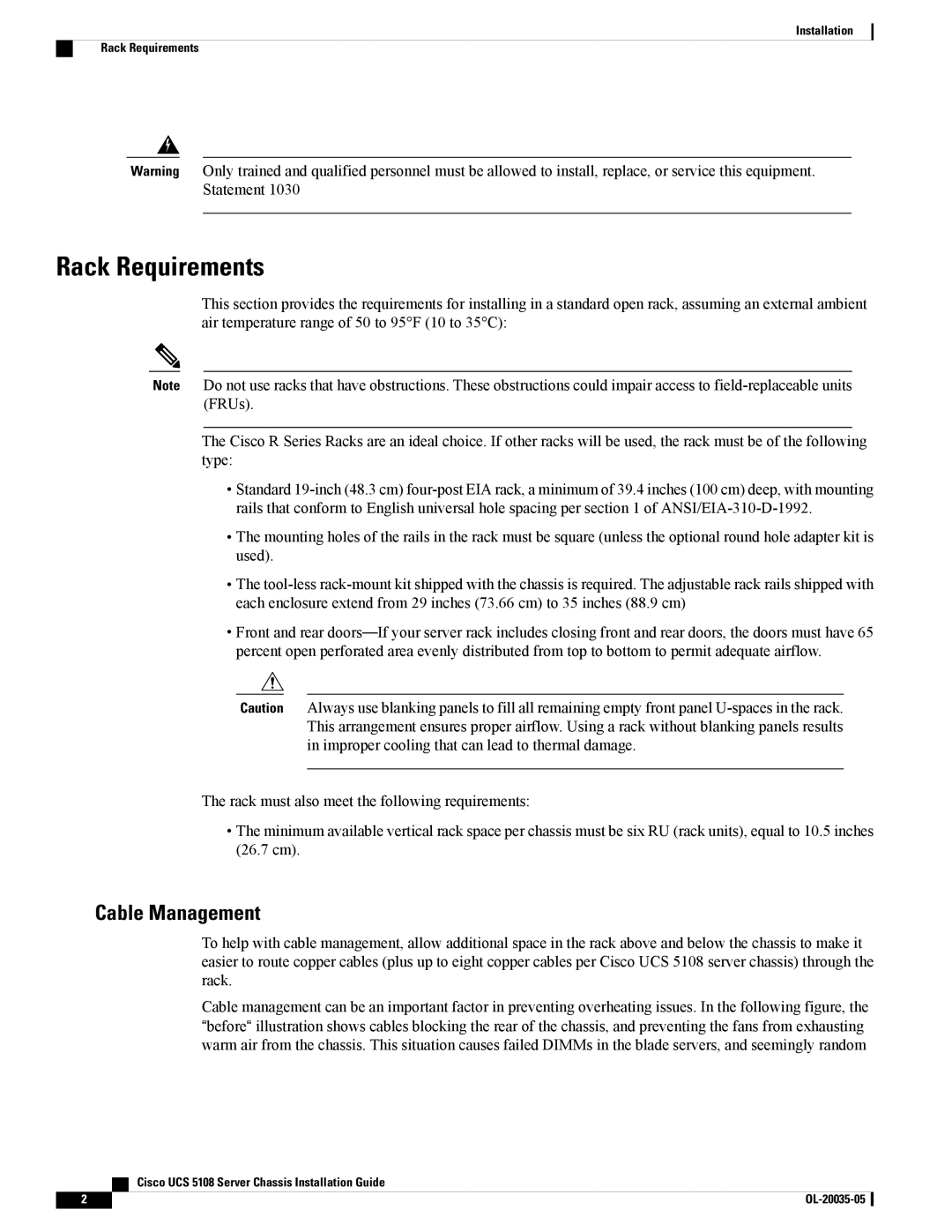
Installation
Rack Requirements
Warning Only trained and qualified personnel must be allowed to install, replace, or service this equipment. Statement 1030
Rack Requirements
This section provides the requirements for installing in a standard open rack, assuming an external ambient air temperature range of 50 to 95°F (10 to 35°C):
Note Do not use racks that have obstructions. These obstructions could impair access to
The Cisco R Series Racks are an ideal choice. If other racks will be used, the rack must be of the following type:
•Standard
•The mounting holes of the rails in the rack must be square (unless the optional round hole adapter kit is used).
•The
•Front and rear
Caution Always use blanking panels to fill all remaining empty front panel
The rack must also meet the following requirements:
•The minimum available vertical rack space per chassis must be six RU (rack units), equal to 10.5 inches (26.7 cm).
Cable Management
To help with cable management, allow additional space in the rack above and below the chassis to make it easier to route copper cables (plus up to eight copper cables per Cisco UCS 5108 server chassis) through the rack.
Cable management can be an important factor in preventing overheating issues. In the following figure, the “before“ illustration shows cables blocking the rear of the chassis, and preventing the fans from exhausting warm air from the chassis. This situation causes failed DIMMs in the blade servers, and seemingly random
| Cisco UCS 5108 Server Chassis Installation Guide |
2 |
